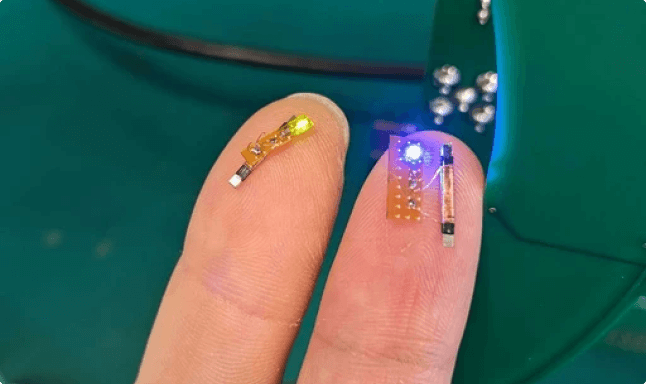Bubbled and the vision of a decentralized AR future
I had the pleasure to ask some questions to Bubbled, an interesting company that is trying to mix two of the most interesting technologies of the moment: augmented reality and blockchain. Since a lot of companies are trying to use the blockchain inside immersive tech, I’ve been very pleased to do this interview, so I have been able t ask why these technologies should be a perfect match together.
This has been my interview with Bubbled CEO Andre Voisin… I hope you’ll enjoy it!

Hello, can you introduce yourself to my readers?
Hi all, i’m Andre Voisin, founder and CEO of Bubbled.
Talk to us about Bubbled!
Bubbled is the first globally persistent and decentralized AR cloud in which you can own virtual spaces tethered to real world locations on the blockchain for experiences in AR. Our presale starts in April. We’re planning a series of Google Hangout events coming soon to invite people to learn more about us, I’ll share the details as we nail down the dates.
Why you and lots of other companies are investing in mixing the blockchain with AR and VR? Is it only a way to mix buzzwords or are there practical reasons?
Our focus is AR, augmented reality.
Last spring, we like so many were looking forward to Apple’s upcoming framework release ARkit. We were discussing developing and releasing an app that enabled users to see individuals’ social media posts as AR content above their heads in real-time – we envisioned thought bubbles above their head as they walked down the street; hence the name ‘Bubbled’. However, as we’re UK based, we were also aware of the potential privacy issues and the need to be GDPR compliant. That was the start of the conversation.
Privacy issues then became ‘what about issues of physical land ownership’ and we started thinking about this because our intention was to start with social media posts to gain the user base, to then move into posting AR content to real world locations. Research brought to our attention some of the issues uncovered by Pokemon Go, where Niantic, the makers faced lawsuits for placing pokemon in locations which resulted in players invading privately held locations to ‘catch’ pokemon. We realised we had to solve this issue first before joining the masses and posting AR wherever we liked – blockchain was the obvious solution, its ability to create digital assets meant we could create a layer on top of physical land; a virtual land which enables a layer of ownership and in turn, a route to legal recourse to settle matters of dispute between physical landowners and AR content creators.

And why should you be better than your competitors? What is your strength point?
We don’t believe decentralisation has competitors, only the opportunity for partnerships – competing and ‘cornering the market’ belongs to the world of centralisation. The best platforms of web 3.0 will be the ones that provide a robust set of decentralised tools for the end user. The community is our strength and we are part of that community. Tokens that provide a useful function for the diverse audience within the field of AR and media communications the only thing that matters when building a decentralised platform, as are the dApps built on it.
This way of thinking is our core strength. As is our belief in the power of: General Consensus.
We also believe in the protection of real-world spaces from inappropriate content and the bad advertising practices that exist online from continuing ‘offline’ with the aid of AR and to enable real-world landowners, brick and mortar businesses, locations frequented by vulnerable users; to name a few examples, a way to monetize or protect locations from AR invasions. This led to us forming the Bubbled Framework for Augmented Reality (BFAR – http://bfar.org.uk) a voluntary code of conduct that governs all content visible through our AR viewer.
We also want to discourage the practice in the crypto-space of launching crowdsales with no product, which encourages the practice of flipping tokens on exchanges. This has meant we have been focused on building our MVP which is now ready, meaning we are selling an existing product (crowdsale) rather than fundraising to build a product (crowdfund). This distinction, we hope, will show the community that we are on the right path to success and on the right side of how this industry will grow.
How can the blockchain and decentralised applications can speed up mass adoption of AR?
At the moment, there is an over-complication of explaining DLT (Distributed Ledger Technology) as we are still in the throes of the 2017 ICO boom where billions of dollars were raised on the backs of super complicated-sounding white papers, which caused many non-industry people to switch off from learning and understanding, instead focusing on the money to be made off ‘flipping tokens’ on exchanges rather than the long term benefits of the projects themselves. Once the message is simplified: Blockchain and dApps can enable you to monetise your AR content and create a new marketplace in ownership of virtual spaces – without 3rd party costs; we will see a boom in AR startups forming as DAO’s (Decentralized Autonomous Organizations). 2018 will be the year of ‘Understanding what Blockchain will replace.’

Don’t you think that sooner or later there would come a problem of ownership of the virtual world correlated to the real world? I mean, if I own a house with a garden, how can someone buy the virtual space associated with it and display virtual content within it? That is MY garden! I should decide what virtual elements can be displayed in it…
Case in point!
Google is making moves to build the centralised AR cloud. However, a centralized AR cloud gives companies like Google a huge amount of power, placing it in their hands. It will embed a few companies into the very fabric of the upcoming wave of AR – the AR cloud and real-world advertising in AR.
Imagine the vast risk if the Internet was owned by 1 or 2 companies. The entire global array of IoT devices would essentially be controlled by these entities. The upcoming trillion dollar industry of AR as predicted by Jay Samit at Deloitte, must be decentralized.
Also what about governance? How do you prevent AR from being served on top of your brick and mortar business by companies who have more buying power than you and decide the footfall of your area holds value (shown by Google Maps, collecting your data as you play a “free AR game” which they can then sell to 3rd parties of which you see zero profit from).
How do you protect your backyard from AR invasion? Can you protect the virtual space that sits on top of your home? Better still, can you monetise it?
Maybe you live near a high dwell time location that sees a lot of footfall. Brands should pay YOU to serve AR content there, not Google right? You should also receive 100% of the profit, not the usual 70/30 split, right?
Public space is shared by all, not a few companies – so why should only they be the ones to monetise and profit from it?
The only way is to help build the antithesis of the Google AR cloud – one that is decentralized with a layer of ownership for virtual spaces where the owner subscribes to a code of conduct as a member of BFAR. (http://bfar.org.uk).
How do you envision the future of AR?
We envision a world interconnected and seamlessly blended with augmented virtual content in physical spaces made visible by AR glasses and Smartphones. The decentralized AR cloud will be used to allow users to retrieve and share AR content P2P via IPFS (https://ipfs.io) where it is permanently stored on a decentralized database like BigchainDB (https://www.bigchaindb.com) with no need for centralized storage. This ensures there are no barriers to access and leaves participants in control of their own data which they are then free to monetize – or not, as the case may be.

What about your short term plans?
Short term we are preparing to launch our presale for the BBL token in April, which can be purchased by registering on our whitelist via https://www.bubbled.io/presale – early birds get a 10% bonus. Alternatively, to receive BBL as a free airdrop, interested parties can play our dApp Blocklord (https://www.blocklord.co). BBL reserved via this method will be subject to a 20% bonus. Once the presale is live, participants can start pre-registering to own virtual spaces globally before the BBL token is released to their wallets at the end of the main crowdsale.
And what about your future?
We have built the land registration tool. Next stages will be building the demand side portal for businesses to connect to the decentralized community of AR content creators and virtual space owners, releasing our AR viewer and SDK and building the infrastructure for the decentralized AR cloud.
Anything else you want to add to my readers?
If you are thinking of launching a business on top of a decentralized platform such as Bubbled, carry out this visualisation exercise on ‘Monetizing a decentralized ecosystem.’
@Apompliano touches on the large number of decentralized projects with no clear route to monetization and actual profit. Charlie Fink calls it “The Underpants Gnome.”
Imagine multiple streams of water pooling to form a body of water. These streams are decentralized protocols, blockchains etc. They are all unique ways to do P2P ‘stuff.’
Take this metaphor as an example:
You are on the water bank and see an opportunity to use this water to solve a real world business need i.e. quench thirst. This means you have identified a dApp (decentralized application of this body of water).
Your dApp is merely an interface, it’s a cup you will use to gather this water to quench thirst.
You take this cup (the only cup) back to the village and sell access to it (perhaps a subscription model) for real-world taxable fiat.
Your cup (being the only cup) will be in demand (If you have correctly identified an existing or future business need) and will lead to profit.
Our ‘cups’, Branded and cLand provides access to the decentralized community of Bubbled and a decentralized AR cloud.
I really thank Andre for his very interesting answers. I especially loved the fact that they have created a code of conduct for their ecosystem, I think it is important to have clear rules to make the AR world grow healthy. And I also loved the vision of a free AR future, that is not in the hands of few big companies… even if we all know that it will be hard. Now I have a better vision of why the blockchain is interesting inside AR.
I still think that the virtual world associated to the real world has to be regulated too. Law has to define who owns the virtual space associated with the physical space, otherwise for instance social companies could put virtual ads inside my property and I wouldn’t like that.
I hope you loved this interview as I loved it… if this is the case, please share this article and subscribe to my newsletter!
(Header image by Bubbled)
Disclaimer: this blog contains advertisement and affiliate links to sustain itself. If you click on an affiliate link, I'll be very happy because I'll earn a small commission on your purchase. You can find my boring full disclosure here.




Thanks for featuring Bubbled Anthony.
If anyone is interested in asking more questions about Bubbled they can reach out and join our small but growing telegram community https://t.me/seebubbled.
Interested parties can also reserve virtual space (AR land) on the blockchain via https://www.bubbled.io/presale/